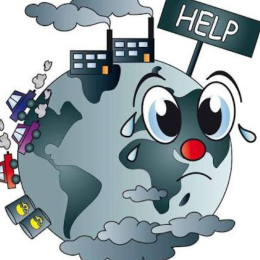CYBERMED LIFE - ORGANIC & NATURAL LIVING
CYBERMED LIFE - ORGANIC & NATURAL LIVING
 Air pollution occurs when harmful or excessive quantities of substances including gases, particulates, and biological molecules are introduced into Earth's atmosphere. It may cause diseases, allergies and also death of humans; it may also cause harm to other living organisms such as animals and food crops, and may damage the natural or built environment. Human activity and natural processes can both generate air pollution.
Air pollution occurs when harmful or excessive quantities of substances including gases, particulates, and biological molecules are introduced into Earth's atmosphere. It may cause diseases, allergies and also death of humans; it may also cause harm to other living organisms such as animals and food crops, and may damage the natural or built environment. Human activity and natural processes can both generate air pollution.
Indoor air pollution and poor urban air quality are listed as two of the world's worst toxic pollution problems in the 2008 Blacksmith Institute World's Worst Polluted Places report. According to the 2014 World Health Organization report, air pollution in 2012 caused the deaths of around 7 million people worldwide, an estimate roughly echoed by one from the International Energy Agency.
Air pollution is a significant risk factor for a number of pollution-related diseases and health conditions including respiratory infections, heart disease, COPD, stroke and lung cancer. The health effects caused by air pollution may include difficulty in breathing, wheezing, coughing, asthma and worsening of existing respiratory and cardiac conditions. These effects can result in increased medication use, increased doctor or emergency room visits, more hospital admissions and premature death. The human health effects of poor air quality are far reaching, but principally affect the body's respiratory system and the cardiovascular system. Individual reactions to air pollutants depend on the type of pollutant a person is exposed to, the degree of exposure, and the individual's health status and genetics. The most common sources of air pollution include particulates, ozone, nitrogen dioxide, and sulfur dioxide. Children aged less than five years that live in developing countries are the most vulnerable population in terms of total deaths attributable to indoor and outdoor air pollution.